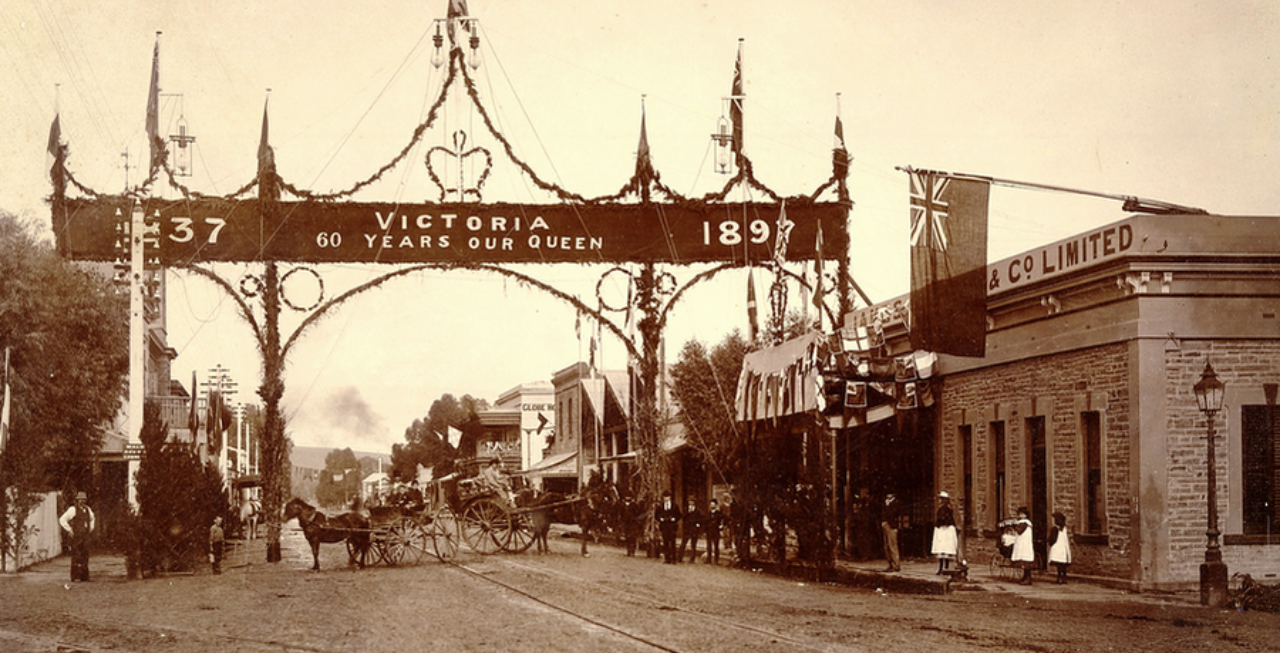History
A town with a vibrant and active community that promotes its unique and historic heritage.

Gawler has a long and rich heritage beginning with the Kaurna people, who are recognised as the Town’s original inhabitants. Following European Settlement, the Town of Gawler became South Australia’s first regional settlement. Gawler and Adelaide are the only two South Australian settlements that were surveyed by Colonel William Light.
The Gawler community recognises and highly values this cultural heritage. Gawler’s community remains steadfast in its desire to protect and reinforce its unique character.
Gawler’s rich history is evident through its built and natural form including its striking architecture, heritage collections, natural riverine environments, large areas of open space and traditional ‘mainstreet’. Today the local community benefits from its surrounds and this rich history is reflected in many community events and festivals.
The Kaurna (pronounced “garna”) people are the traditional custodians of Adelaide and the Adelaide Plains, including the land that is now the Town of Gawler. The Kaurna cultural and heritage beliefs are still as important to the living Kaurna people today.
Teaching young people was, and still is, a central part of Kaurna life. Understanding the environment was important for more than just food, shelter, tools and medicine. Kaurna spirituality recognises the connectedness of people and culture through plants, animals and stars.
The Town of Gawler encompasses numerous areas of significance for Aboriginal people past and present, most notably its three rivers – the North and South Para Rivers and the Gawler River. Parridla Taikondi Park, the river junction, was used as a place for meeting and trading of commodities such as ochre, plant and animal products. The rivers flowing through Gawler provided the Kaurna people with many resources.
The Kaurna language is the original language of Adelaide and the Adelaide Plains. Kaurna people from the Gawler district spoke a different dialect from those in other districts. The Kaurna language was sophisticated and complex and reflected the extensive knowledge of the environment that the Kaurna people possess.
When Gawler was first settled by Europeans in 1839, some early settlers went out of their way to learn the Kaurna language and South Australia’s second Governor, George Gawler (who the town of Gawler is named after), encouraged the colonists to record Aboriginal names so that these might be placed on early settlement maps.
The word ‘Para’ is derived from the Kaurna word ‘Pari’ meaning a stream of flowing water. From around 1920 until the 1990s the Kaurna language went into hibernation, though fortunately, in recent times, the language has undergone a remarkable recovery.
In 1837 Colonel William Light, Surveyor General for the Colony of South Australia camped twice in a local area that became known as ‘Dead Man’s Pass’ on the South Para river as part of his exploration of the Barossa Valley. Light recognised the potential of the location for South Australia’s first country township.
Light’s plan for Gawler included streets aligned with local topography and broad parklands on the major river floodplains, reflecting his design of Adelaide. His Gawler Special Survey encompassed 4,000 acres of land along the North Para, South Para and Gawler rivers. The Church Hill State Heritage Area, part of the plan devised by Light, Finniss and Co., is one of the best examples of mid-nineteenth century town planning in South Australia. The original landowners adopted the name of South Australia’s Governor, George Gawler, when European settlers first arrived in February 1839. The Municipality of the Town of Gawler was proclaimed in July 1857.
Gawler has a long and rich history closely aligned with that of South Australia. Gawler prospered early becoming a regional centre for the surrounding farming communities and playing an important role in supporting the copper mining communities located in Kapunda and Burra.
In the second half of the 19th century Gawler boomed with the construction of public infrastructure such as rail and tramways, bridges, public baths, an Institute and a Town Hall. Industries such as flour mills, foundries, brickworks, manufacturing and retail outlets were established and expanded. This boom led to Gawler being considered the most industrialised town in Australia. Many of the buildings constructed during this period remain standing, providing Gawler with a unique and distinctive character.
Key industries in this late 19th century prosperity were:
- King, Duffield, Harrison, Dawson and Hilfers – 3 major flour mills.
- James Martin & Co – manufacture of agricultural, mining and ore processing machinery; smelters for the mines of Broken Hill and the Western Australian goldfields; manufacture of steam locomotives and rolling stock.
- May Brothers – manufacture of mining and agricultural machinery.
With prosperity came a cultural flowering. One highlight was the competition to compose an anthem for Australia in 1859. The winner of this competition was the Song of Australia, written by Caroline Carleton to music by German Composer Carl Linger. This song was South Australia’s song for many years and was a candidate in the 1977 national referendum to choose a new National Anthem for Australia. Advance Australia Fair was the song chosen at this referendum to replace God Save the Queen.
The population of Gawler continues to grow. In 2016 Gawler had a population of 23,500 and this is predicted to grow to over 40,000 in future years. Gawler continues to be a major regional and cultural centre for communities to the north of Adelaide including the nearby agricultural and horticultural communities located in the lowernorth, mid-north, northern Adelaide Plains and Barossa Valley.
Other Resources
Historic Photographs and Articles of Gawler: www.gawlerhistory.com - administered independently by the Gawler History Team
History of Gawler's Street Names: History Of Gawlers Street Names
History of Council Members: History of Council Members



